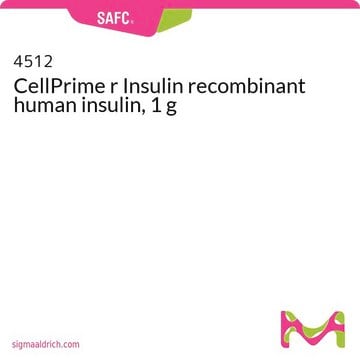A cell-permeable ESCs (Embryonic Stem Cells) EMT (Epithelial-Mesenchymal Transition) inducer that is reported to prime/sensitize human and murine ESC cultures for much more enhanced/efficient differentiation into progenitor cells of multiple lineages, including Activin A- (Cat. No.
114700) induced definitive endoderm differentiation (60% differentiation from murine R1 ESCs with 5 ng/ml Activin A and 200 nM Spd), ATRA- (Cat. No.
554720) induced neuronal progenitor differentiation, and BMP-4- (Cat. No.
203642) induced mesoderm differentiation, under suboptimal lineage specifying stimuli concentrations and often serum-free conditions, while Spd sensitization alone does not induce any ESCs differentiation. Spd is shown to interact with NME2/DNPK B/PUF and prevent NME2 nuclear localization and c-myc transcription in murine R1 ESC cultures (46% and 85% drop in c-myc mRNA in 24 h, respectively, with 200 nM and 500 nM Spd), which accounts for, at least in part, its EMT induction activity. Although a structural analog of the broad-spectrum kinase inhibitors Staurosporine (Cat. Nos.
569396 and
569397) and UCN-01 (Cat. No.
539644), Spd exhibits significant kinase inhibitory activities only at elevated concentrations, but not at concentrations ≤500 nM typically used in EMT induction.
A cell-permeable ESCs (Embryonic Stem Cells) EMT (Epithelial-Mesenchymal Transition) inducer that is reported to prime/sensitize human and murine ESC cultures for much more enhanced/efficient differentiation into progenitor cells of multiple lineages, including Activin A- (Cat. No. 114700) induced definitive endoderm differentiation (60% differentiation from murine R1 ESCs with 5 ng/ml Activin A and 200 nM Spd), ATRA- (Cat. No. 554720) induced neuronal progenitor differentiation, and BMP-4- (Cat. No. 203642) induced mesoderm differentiation, under suboptimal lineage specifying stimuli concentrations and often serum-free conditions, while Spd sensitization alone does not induce any ESCs differentiation. Spd is shown to interact with NME2/DNPK B/PUF and prevent NME2 nuclear localization and c-myc transcription in murine R1 ESC cultures (46% and 85% drop in c-myc mRNA in 24 h, respectively, with 200 nM and 500 nM Spd), which accounts for, at least in part, its EMT induction activity. Although a structural analog of the broad-spectrum kinase inhibitors Staurosporine (Cat. Nos. 569396 and 569397) and UCN-01 (Cat. No. 539644), Spd exhibits significant kinase inhibitory activities only at elevated concentrations, but not at concentrations ≤500 nM typically used in EMT induction.









